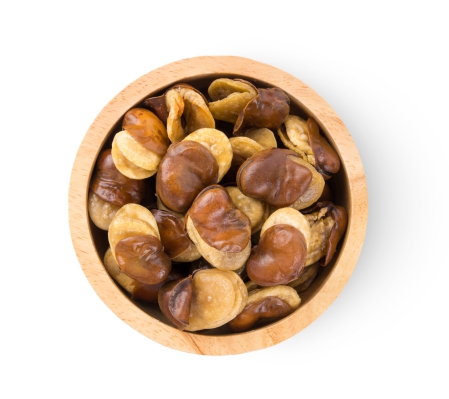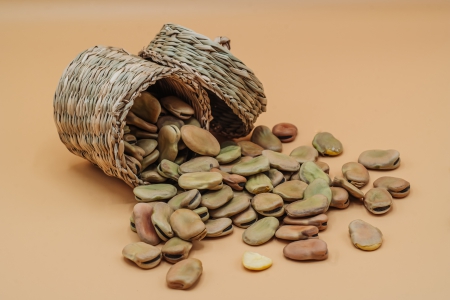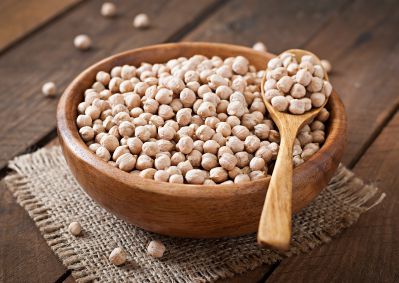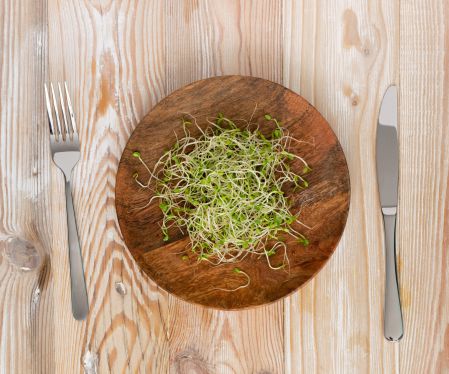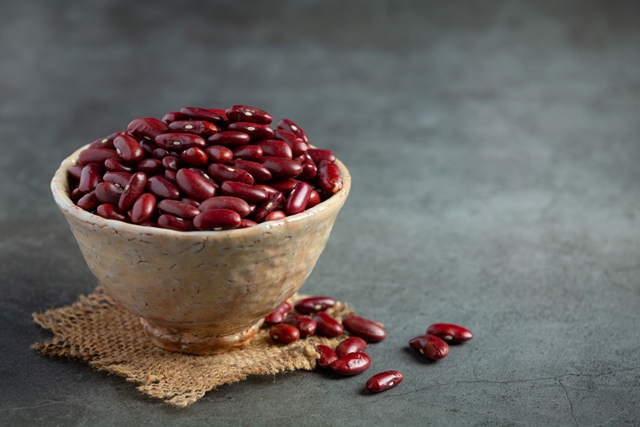Faba bean is an important and nutritious legume belongs to Fabaceae family. It is significantly rich in proteins, fibres, vitamins and minerals and its consumption are incredibly valuable for human life.
Nutritional profile
- It contains desirable amount of carbohydrates and dietary fibre
- It mainly contains unsaturated fatty acid and it is free from saturated fat and cholesterol
- It contains various amino acids like glutamic acid, methionine, leucine, glycine, lysine, arginine etc.
- It also contains quite a lot of vitamins such as Vitamin A, Vitamin C, Vitamin K, thiamin, riboflavin, niacin, pantothenic acid, folic acid and choline
- It contains various trace elements as well, which include calcium, phosphorus, magnesium, zinc, sodium, potassium, copper, selenium, manganese
- It also contains numerous polyphenolic compounds like catechin, prodelphinidin, quercetin, myricetin, kaempferol, apigenin and luteolin-free glycosides
Anti-nutritional factors and toxins of faba bean
- Faba bean contains an alkaloid glycoside named vicine, which causes toxicity in those individuals who have glucose-6-phosphate dehydrogenase (an enzyme) deficiency. It is a hereditary problem mainly characterized by inborn loss of the enzyme glucose-6-phosphate dehydrogenase. Faba bean is very toxic for them as its vicine content is responsible for causing favism, which is characterized by breaking up of red blood cell that results in hemolytic anemia
- It also contains several anti-nutritional factors, which include –

- Protease inhibitor that inhibits the activity of protease enzyme and impaired protein metabolism
- Lectins, in excessive amount it causes autoimmune disease by enhancing gut permeability
- Tannin, which inhibits iron absorption in large quantity
Health benefits
Role on metabolism
- It plays important role in facilitating the metabolic reactions of body as it provides desirable amount of B vitamins which act as cofactor for several enzymes, which are involved in metabolic reactions
- It also helps in energy (ATP) production by improving the synthesis of cytochrome (iron containing protein involved in electron transport chain) by providing significant amount of iron
- As it is a good source of iron hence it is also associated with maintaining proper blood volume by synthesizing RBC, which helps to facilitate the transportation of absorbed food molecules to every cell for approaching metabolism
Role on skeletal system
- Magnesium and copper contents of faba bean are responsible for improving bone mass and associated with reducing bone losses
- It helps to improve bone mineral density
- It helps to reduce the prevalence of osteoarthritis
- Its consumption is very useful for post-menopausal women for improving their bone mass
Role on immunity

- It helps to boosting up the immunological responses of body
- The copper content of faba bean plays significant role in maintaining healthy white blood cell that helps to destroy pathogen by phagocytosis
- It has seen that extract of faba bean is very beneficial for treating lung cell injury and helps to protect the lung cells from oxidative damage
- It also helps to protect the body from the harmful effects of free radicals by enhancing antioxidant activity
Role on weight management
- It contains significant amount of protein and fibre hence its consumption is associated with providing a feeling of fullness that lowers the calorie intake
- Its fibre content is responsible for prevent fat accumulation within body by decreasing the rate of fatty acid bio synthesis and reduces total cholesterol concentration, which helps to prevent obesity
- It is also associated with increasing the calorie expenditure by improving the catabolic rate of the body that facilitates weight reduction by generating a negative energy balance
- It is considered as a low caloriegenic food hence it does not provide many calories on its oxidation thus it is very beneficial to be included in the daily diet of an obese individual
Role on preventing birth defects

- Congenital disorders or birth defects are characterized as physical or developmental or intellectual disabilities, which are present at birth
- Spina bifida (incomplete development of spinal cord), neural tube defect (neural tube does not close properly) and anencephaly (incomplete development of brain) are the most common type of congenital disorders that affect the infant very adversely. Deficiency of folic acid is the main cause of these congenital anomalies hence it is very essential to consume folic acid during pregnancy. Consumption of faba bean during this period is very useful as it contains high amount of folic acid
- Consumption of faba bean during gestation also helps to prevent the risk of miscarriages, low birth weight and preterm infant due to its high folate as well as iron content
Therapeutic applications
Role on preventing Parkinson’s disease
- It plays significant role in reducing Parkinson’s disease (a disease characterized by weakened motor performance)
- Levodopa is a chemical compound found in faba bean, is closely associated with increasing the plasma level of L-dopa that strongly improves motor performance and hence its consumption is favorable for improving the symptoms of Parkinson’s disease
- L-dopa also acts as neurotransmitter, which helps to transmit nervous stimulus between neurons and transmit stimulus from neuron to muscle hence related with relieving other Parkinson’s symptoms
- It is allied with increasing the concentration of dopamine within body (as L-dopa is converted into dopamine) that helps to improve executive function, mood as well as motor control and reduces tremors

Role on maintaining lipid profile
- It is extensively used for preventing hyperlipidemia
- Its soluble fibre contents help in reducing the concentration of LDL within body and help to reduce the risk of developing atherosclerosis
- It is associated with maintaining the lipid profile in normal range
Role on promoting cardiac health
- It acts as an effective preventive measure for various cardiovascular diseases such as atherosclerosis, ischemic heart disease, thrombosis, strokes and myocardial infraction
- It has seen that individual who consume faba bean have comparatively lesser cardiac morbidity rate as it helps to improve cardiac functionality
- Its potassium and magnesium contents are associated with relaxing the blood vessels that help to reduce blood pressure and improves cardiac health
- It also helps to protect the heart from oxidative damages
Role on preventing anemia
- Faba bean is a good source of iron hence its consumption is closely related with reducing the prevalence of anaemia (especially hypo chromic microcytic anemia)
- It helps in hemoglobin synthesis that also prevents anemia. Hence its consumption is very effective especially for those individuals who are prone to be anemic like adolescent girl, pregnant women and lactating women

Recent findings
- Recent studies have shown that faba bean can be utilized for the formulation of cereal based products like pasta, gluten free products, bread etc. for enhancing functional as well as nutritional features (Verni et al., 2019)
- According to several researches it has seen that consumption of faba bean seeds, leaves and pods are very beneficial as they are rich in protein and also increases biological nitrogen fixation, which help to reduce the consumption of commercial nitrogen fertilizer (Etemadi et al., 2019)
General consideration of consuming faba bean
It is better to avoid over consumption of faba bean as it may cause depression by increasing the concentration of L-dopa hence it should be consumed in required amount.
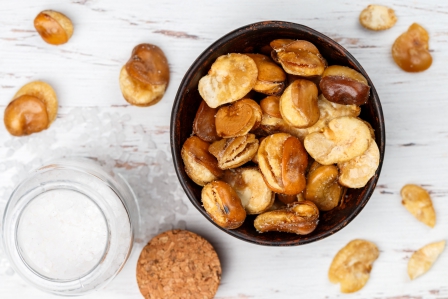
Source:
Coda, R., Varis, J., Verni, M., Rizzello, C.G. and Katina, K., 2017. Improvement of the protein quality of wheat bread through faba bean sourdough addition. LWT-Food Science and Technology, 82, pp.296-302.
Etemadi, F., Hashemi, M., Barker, A.V., Zandvakili, O.R. and Liu, X., 2019. Agronomy, nutritional value, and medicinal application of faba bean (Vicia faba L.). Horticultural Plant Journal, 5(4), pp.170-182.
Khazaei, H., Purves, R.W., Hughes, J., Link, W., O'Sullivan, D.M., Schulman, A.H., Björnsdotter, E., Geu-Flores, F., Nadzieja, M., Andersen, S.U. and Stougaard, J., 2019. Eliminating vicine and convicine, the main anti-nutritional factors restricting faba bean usage. Trends in Food Science & Technology, 91, pp.549-556.
Luzzatto, L. and Arese, P., 2018. Favism and glucose-6-phosphate dehydrogenase deficiency. New England Journal of Medicine, 378(1), pp.60-71.
Prabhu, S.D. and Rajeswari, D.V., 2018. Nutritional and Biological properties of Vicia faba L.: A perspective review. International Food Research Journal, 25(4), pp.1332-1340.
Turco, I., Ferretti, G. and Bacchetti, T., 2016. Review of the health benefits of Faba bean (Vicia faba L.) polyphenols. Journal of Food & Nutrition Research, 55(4).
Verni, M., Coda, R. and Rizzello, C.G., 2019. The use of faba bean flour to improve the nutritional and functional features of cereal-based foods: Perspectives and future strategies. In Flour and breads and their fortification in health and disease prevention (pp. 465-475). Academic Press.
